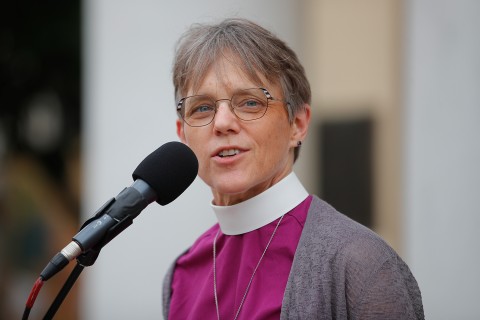Billy Graham and the fracture of American evangelicalism
Billy Graham’s 95th birthday party last week was a heartwarming event—and a media spectacle. Most accounts of the celebration emphasized the star-studded guest list: Donald Trump, Sarah Palin and Rupert Murdoch rubbed elbows with Ricky Skaggs and Kathy Lee Gifford. It’s hard to imagine that any preacher of old-time religion has enjoyed such a high celebrity head-count. Even in his golden years, Graham has not lost his golden touch: an aura of wholesome Christian patriotism that appeals to entertainers looking to transcend showbiz as well as to culture warriors on the make.
The reporters who covered the party provided a window into Graham’s lasting power as a cultural icon, but they largely missed his significance to American Christianity. For the second half of the 20th century, Graham was more than an evangelist who led millions to Christ and hobnobbed in the White House. He was the public face of resurgent post-war evangelicalism, the best-known representative of a movement that compelled many conservative Protestants to ponder what it means to be an “evangelical”—and whether they wanted anything to do with that label.
Billy Graham and his colleagues came of age in the wake of the fundamentalist-modernist battles. They shared conspicuously similar backgrounds in Reformed churches and seminaries, but they disavowed the fundamentalist commitment to doctrinal purity in the hopes of launching a “neo-evangelical” revival of hearts and minds. They wanted not only to win the world for Christ, but also to rejuvenate conservative Protestant intellectual culture and earn the respect of the secular intelligentsia. These were the core aims of organizations like the National Association of Evangelicals (founded in 1943), Fuller Theological Seminary (1947), the Evangelical Theological Society (1949) and Christianity Today (1956).





